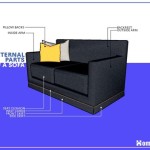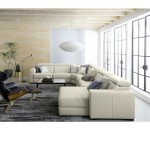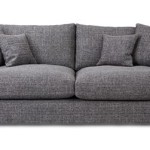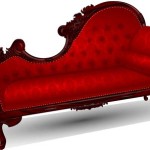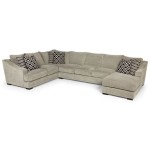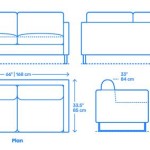Foam Replacement For Sofa Cushions: A Comprehensive Guide
Sofa cushions, integral to the comfort and aesthetics of living spaces, are subject to wear and tear over time. Regular use compresses the foam, leading to sagging, a lack of support, and an overall decline in the sofa's visual appeal. Rather than replacing the entire sofa, replacing the foam within the cushions offers a cost-effective and sustainable solution. This article provides a comprehensive guide to foam replacement for sofa cushions, covering types of foam, factors to consider when choosing foam, the replacement process, and maintenance tips to prolong the lifespan of the new cushions.
Understanding Different Types of Foam
Selecting the right type of foam is crucial for achieving the desired level of comfort and durability in sofa cushions. Various foam options are available, each possessing unique characteristics that influence their suitability for specific applications. These options include polyurethane foam, memory foam, and high-density foam, among others. A careful understanding of their properties will enable informed decision-making.
Polyurethane Foam: Polyurethane foam is a versatile and widely used material known for its affordability and availability in varying densities. Lower-density polyurethane foam is commonly found in back cushions or less frequently used seating areas. Its softer texture provides a comfortable feel but it's prone to quicker degradation under heavy use. Higher-density polyurethane foam offers improved durability and support, making it suitable for seat cushions that experience daily wear. This foam type is generally more resistant to compression and retains its shape for a longer period.
Memory Foam: Memory foam, also known as viscoelastic foam, conforms to the body's shape, providing excellent pressure relief and support. Its unique property lies in its ability to distribute weight evenly, reducing stress on pressure points. While memory foam delivers exceptional comfort, it can be less breathable than other types of foam and may retain heat. For sofa cushions, memory foam is often combined with a layer of high-density foam to provide both support and comfort. The combination is a good compromise between the conforming qualities of memory foam and the resilience of a firmer foam.
High-Density Foam: High-density foam is characterized by its firm support and superior durability. It is highly resistant to compression and maintains its shape even after prolonged use. This type of foam is ideal for seat cushions that require firm support and long-lasting performance. While it might not offer the same level of plushness as memory foam, its resilience makes it an excellent choice for individuals who prefer a firmer seating surface. High-density foam is also a good choice for cushions that will be frequently sat upon.
Down and Feather Fill: Though not technically foam, down and feather filling represents a traditional alternative for sofa cushions. Down and feather cushions offer a luxurious and soft feel. However, they require regular fluffing to maintain their shape and can be more expensive than foam options. Down and feathers tend to flatten over time and lose their loft, requiring periodic refilling. These fills also demand specialized cleaning to prevent clumping and maintain hygiene. Down and feather fills are often found in back cushions or decorative pillows.
Fiber Fill: Fiber fill, typically made from polyester fibers, offers a cost-effective option for sofa cushions, particularly back cushions or decorative pillows. Fiber fill is lightweight and provides a soft, plush feel. However, it tends to lose its shape and flatten more quickly than foam and often requires frequent fluffing to maintain its loft. Fiber fill is a suitable option for cushions that receive less wear and tear and where budget is a primary consideration. It is also hypoallergenic, making it a good choice for individuals with allergies.
Key Factors to Consider When Choosing Foam
Selecting the appropriate foam for sofa cushion replacement involves careful consideration of several factors. These factors directly impact the comfort, durability, and overall performance of the cushions. Understanding these aspects will help in making an informed decision that aligns with individual needs and preferences.
Density and ILD (Indentation Load Deflection): Density measures the weight of the foam per cubic foot and is a primary indicator of durability. Higher density foam generally provides better support and lasts longer. ILD measures the firmness of the foam, indicating the amount of weight required to compress the foam by a certain percentage. A higher ILD signifies a firmer foam. Choosing the right combination of density and ILD is crucial for achieving the desired level of comfort and support. For example, a high-density foam with a moderate ILD might be suitable for seat cushions, while a medium-density foam with a lower ILD could be preferred for back cushions.
Thickness: The thickness of the foam plays a vital role in determining the cushion's overall height and level of support. Thicker foam cushions generally provide more substantial support and can better accommodate heavier individuals. The existing cushion thickness can serve as a guide, but personal preferences and the sofa's design should also be considered. Overly thick cushions might make the sofa feel too high, while excessively thin cushions may lack adequate support. Proper measurement and consideration of the sofa's frame are important to ensure a comfortable and aesthetically pleasing result.
Intended Use and Placement: The location of the cushion on the sofa significantly influences the choice of foam. Seat cushions, which bear the brunt of weight and frequent use, require higher-density and more durable foam compared to back cushions. Back cushions, designed primarily for support and comfort, can utilize lower-density or softer foam options. Likewise, cushions in high-traffic areas of the sofa necessitate more resilient foam than those in less frequently used spots. The specific needs of each cushion should be carefully assessed before making a selection.
Budget: The cost of foam varies significantly depending on the type, density, and thickness. While it's tempting to opt for the cheapest option, investing in higher-quality foam can provide long-term cost savings by extending the lifespan of the cushions. Evaluating different options within a predetermined budget allows for finding the best balance between affordability and performance. Comparing prices from different suppliers and considering the potential long-term value of more durable foam is crucial.
Allergies and Sensitivities: Individuals with allergies or sensitivities to certain materials should carefully consider the foam's composition. Hypoallergenic foam options are available and can minimize the risk of allergic reactions. Natural latex foam, for example, is often considered a hypoallergenic alternative to synthetic foams. However, individuals with latex allergies should avoid this option. CertiPUR-US certified foam is another consideration, as it ensures the foam has been tested for harmful chemicals and emissions.
The Foam Replacement Process
Replacing foam in sofa cushions is a straightforward process that can be accomplished with basic tools and a reasonable amount of time. Proper preparation and attention to detail are key to achieving professional-looking results.
Removing the Old Foam: Begin by carefully unzipping or removing the cushion cover. Gently pull out the old foam, taking note of how it fits within the cover. Inspect the cover for any signs of damage, such as tears or stains, and repair or clean it as needed. If the old foam is particularly degraded, it may crumble or break apart during removal. Having a vacuum cleaner nearby can help with cleaning up any debris. It's also advisable to wear gloves to protect your hands during this process.
Measuring and Cutting the New Foam: Accurately measure the dimensions of the old foam or the inside of the cushion cover. Use these measurements to cut the new foam to the appropriate size and shape. An electric knife or a sharp utility knife are suitable tools for cutting foam. Ensure the cuts are straight and precise for a snug fit within the cover. If the cushion has angled edges or specific contours, use the old foam as a template to replicate the shape on the new foam. Mark the cutting lines clearly with a marker before making the cuts.
Wrapping the Foam (Optional): Wrapping the foam in batting or muslin fabric can provide an extra layer of protection and prevent the foam from rubbing directly against the cushion cover. This can extend the lifespan of both the foam and the cover. Cut the wrapping material slightly larger than the foam and secure it with spray adhesive or staples. Ensure the wrapping material is smooth and wrinkle-free to avoid creating bumps or unevenness in the finished cushion.
Inserting the New Foam: Carefully insert the new foam into the cushion cover. This may require some maneuvering and gentle compression of the foam. Ensure the foam is evenly distributed within the cover and that it fills all corners and edges. If the foam is slightly too large, trim it as needed to achieve a comfortable fit. Once the foam is properly positioned, zip up or close the cushion cover securely.
Finishing Touches: Once the cushion is filled, inspect it for any wrinkles, unevenness, or gaps. Gently massage the foam to ensure it is evenly distributed and that the cover is smooth. Fluff the cushion to restore its shape and volume. Repeat the process for all remaining cushions. After replacing the foam in all cushions, arrange them on the sofa and assess the overall appearance and comfort. Make any necessary adjustments to achieve the desired look and feel.
Maintenance Tips for Prolonging Cushion Lifespan
Proper maintenance is essential for extending the lifespan of sofa cushions and preserving their comfort and appearance. Regular cleaning, rotation, and preventative measures can significantly impact the long-term performance of the cushions.
Regular Cleaning: Vacuum sofa cushions regularly to remove dust, dirt, and debris. This helps prevent allergens from accumulating and keeps the fabric fresh. Spot clean any spills or stains immediately to prevent them from setting. Follow the manufacturer's instructions for cleaning the cushion covers. Some covers may be machine washable, while others require professional cleaning. Avoid using harsh chemicals or abrasive cleaners, as these can damage the fabric and foam.
Cushion Rotation: Rotate cushions regularly to distribute wear evenly. This prevents certain areas from becoming overly compressed and extends the overall lifespan of the cushions. Swap cushions from high-traffic areas with those from less frequently used spots. Flip reversible cushions periodically to further distribute wear and tear. This simple practice can significantly prolong the life of the foam and maintain a consistent appearance.
Avoid Direct Sunlight: Prolonged exposure to direct sunlight can fade the fabric of sofa cushions and degrade the foam. Position the sofa away from direct sunlight or use curtains or blinds to filter the light. Applying a fabric protectant with UV inhibitors can also help prevent fading. Protect the cushions from excessive heat as well, as high temperatures can accelerate foam degradation.
Fluffing and Shaping: Regularly fluff the cushions to maintain their shape and volume. This is especially important for cushions filled with down, feathers, or fiberfill. Fluffing restores loft and prevents the fill from clumping or settling. Shaping the cushions helps them maintain their form and prevents them from becoming flattened or misshapen. This can be done manually or with the assistance of a cushion enhancer.
Professional Cleaning: Consider professional cleaning for sofa cushions periodically, especially for delicate fabrics or stubborn stains. Professional cleaners have the expertise and equipment to safely and effectively clean the cushions without damaging the fabric or foam. They can also apply stain-resistant treatments to protect the cushions from future spills. The frequency of professional cleaning depends on the usage and type of fabric.

Thinking About Sofa Cushion Foam Replacement Wefixanysofa Com

What Is The Best Foam To Use For Sofa Cushions In 2024 Sden

How Can I Make My Couch Cushions Firmer

Replacement Foam Sofa Cushions Super

Custom Replacement Cushions The Cushion Company

Cushion Foam Replacement Brampton Mississauga Toronto

Rolston 3pc Outdoor Replacement Loveseat Sofa Cushion Set Haven Way Target

Love Your Couch Cushions Here S What You Need To Know Cushion Source Blog

Rolston 3pc Outdoor Replacement Loveseat Sofa Cushion Set Gray Charcoal Haven Way Target

Where To Buy Foam For Couch Cushions Replacement S


